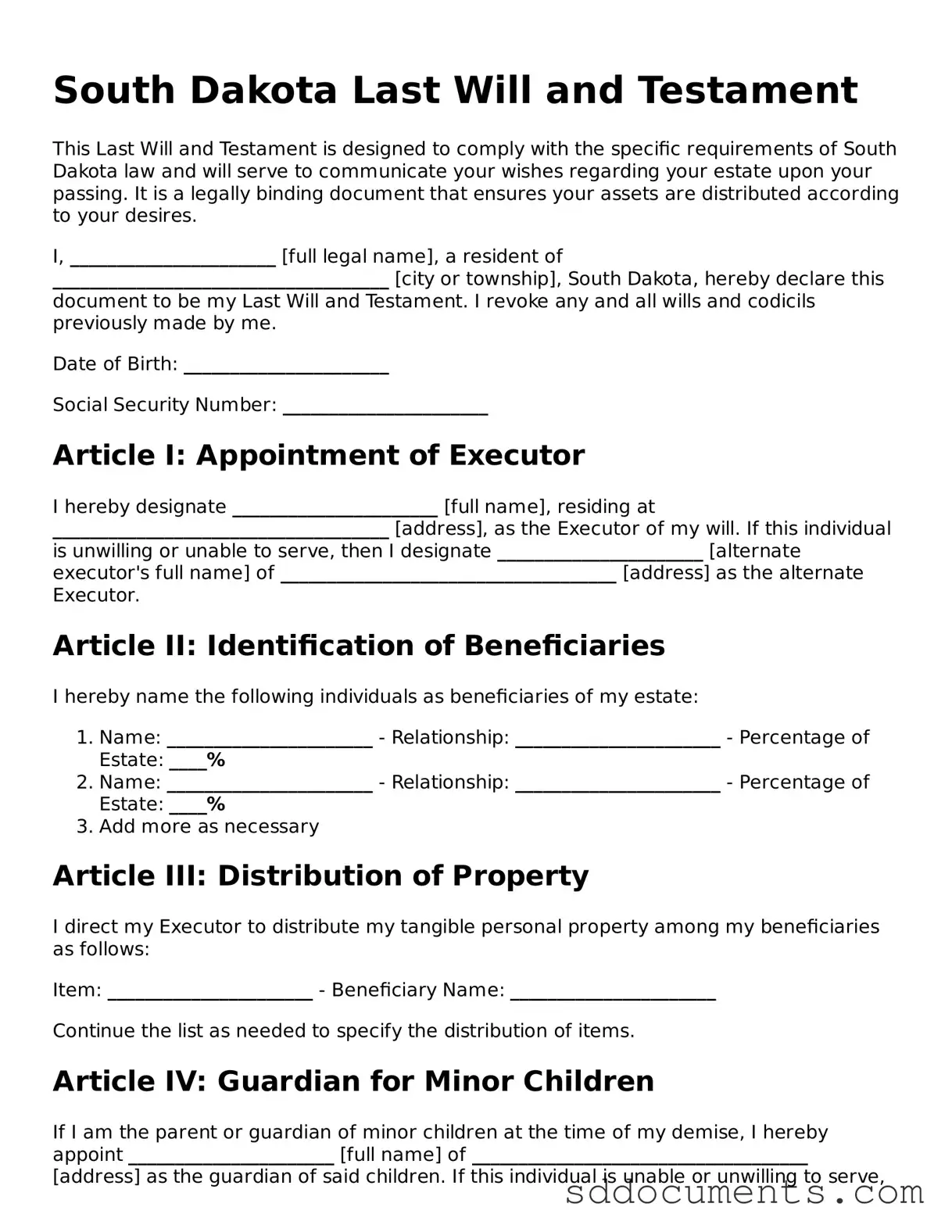Free Last Will and Testament Template for South Dakota
A South Dakota Last Will and Testament form is a legal document that outlines how an individual's assets and affairs will be handled after their passing. This form ensures that your wishes are honored and provides clarity for your loved ones during a difficult time. Take the first step in securing your legacy by filling out the form below.
Click the button below to get started.
Customize Document Online
